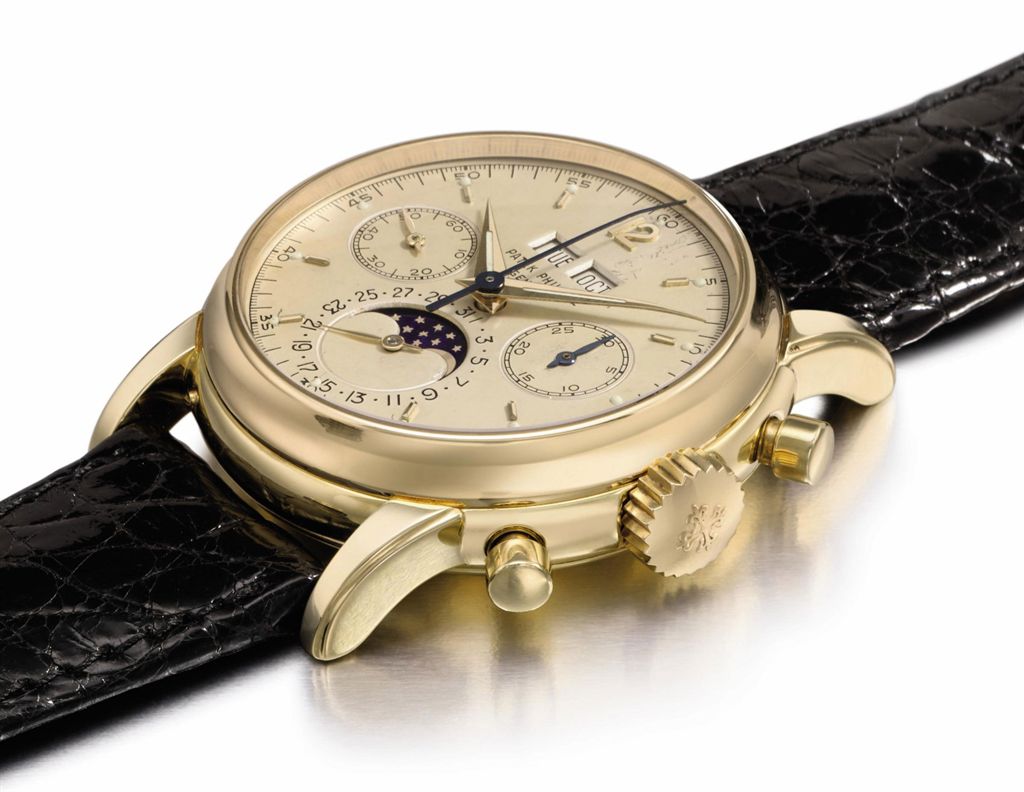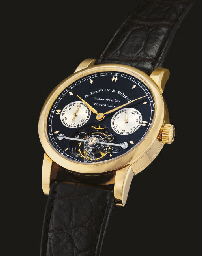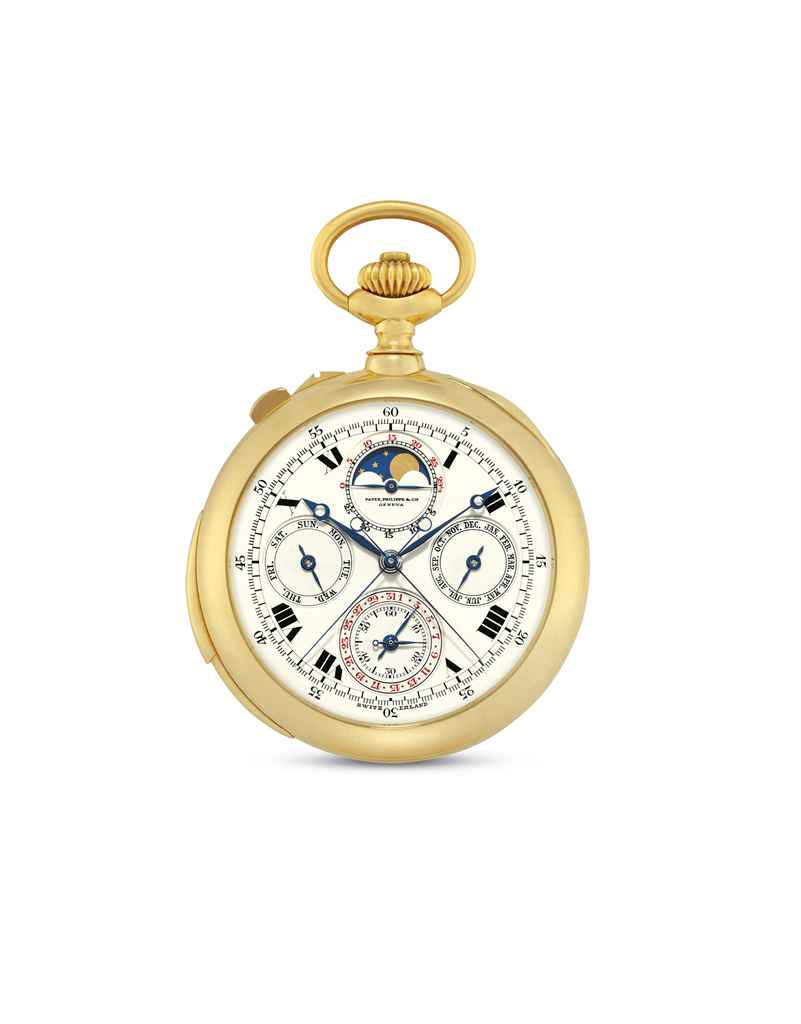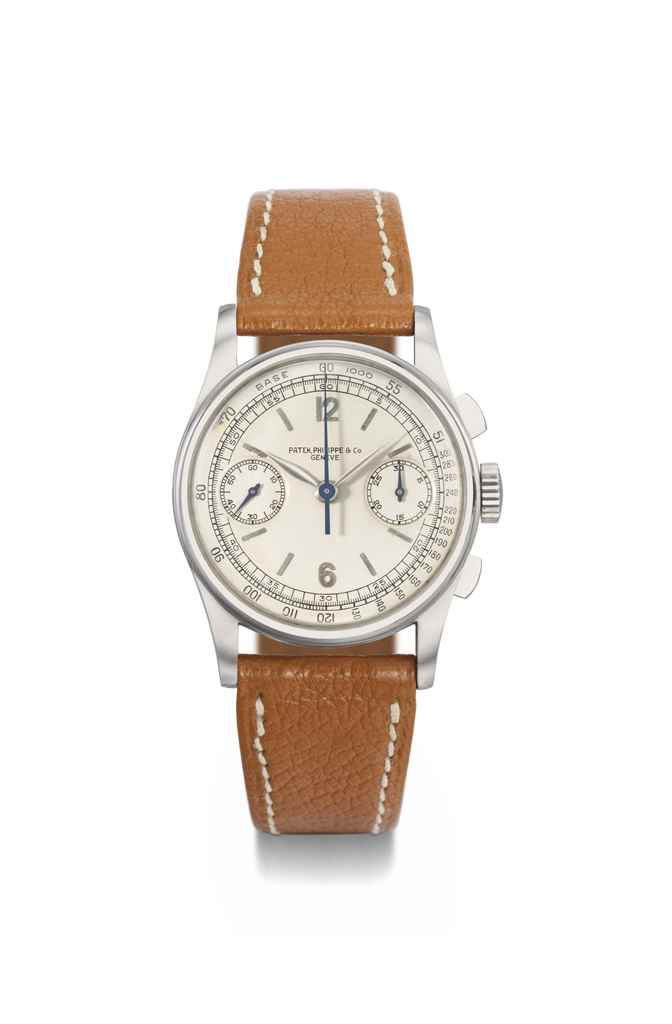A fine and rare George III inlaid mahogany double tube or contra-barometer, Balthazar Knie, Edinburgh, dated 1800, the case with broken triangular pediment and parquetry inlaid chevron frieze above rectangular silvered scale inscribed MADE BY MR. KNIE, 1800 to lower centre, applied with visible syphon tube with bulb to top of mercury column on the right and to cistern end on the left, above which is an oil filled narrow bore extension tube against a scale calibrated in reverse 28 to 31 inches divided into hundreds and calibrated in tenths over this range, with the usual engraved annotations and sliding brass recording pointer, the whole within line inlaid and gilt cavetto moulded surround and behind glazed door, the base with inverted cavetto moulded foot, 114cm high. The development of the double tube barometer is generally attributed to Robert Hooke (1635-1703) who in 1668 demonstrated a related instrument to the Royal Society. By having bulbs at each end of the mercury filled cistern tube, relatively small movements within the mercury level would occur with changes in atmospheric pressure due to the increased surface area of the mercury within the bulbs in relation to the bore of the tube. However, by filling the narrow bore extension tube with a coloured oil on the syphon side, amplified movement will be observed. Due to the fact that the oil level will drop with increase in atmospheric pressure, the barometer scale and associated comments work in reverse, which is why this type of barometer is referred to as a 'contra-barometer'. A similar instrument by Knie is illustrated in Banfield, Edwin BAROMETERS Stick or Cistern Tube on page 209 alongside an example signed T. Thompson EDIN'r (which was sold in these rooms The Banfield Collection of Barometers Tuesday 4th September 2007 lot 185). Another comparable instrument by B. Brown of Edinburgh is illustrated in Goodison, Nicholas English BAROMETERS 1680-1860 page 102 which Goodison suggests could have been supplied to Brown by Knie.
A fine and rare George III inlaid mahogany double tube or contra-barometer, Balthazar Knie, Edinburgh, dated 1800, the case with broken triangular pediment and parquetry inlaid chevron frieze above rectangular silvered scale inscribed MADE BY MR. KNIE, 1800 to lower centre, applied with visible syphon tube with bulb to top of mercury column on the right and to cistern end on the left, above which is an oil filled narrow bore extension tube against a scale calibrated in reverse 28 to 31 inches divided into hundreds and calibrated in tenths over this range, with the usual engraved annotations and sliding brass recording pointer, the whole within line inlaid and gilt cavetto moulded surround and behind glazed door, the base with inverted cavetto moulded foot, 114cm high. The development of the double tube barometer is generally attributed to Robert Hooke (1635-1703) who in 1668 demonstrated a related instrument to the Royal Society. By having bulbs at each end of the mercury filled cistern tube, relatively small movements within the mercury level would occur with changes in atmospheric pressure due to the increased surface area of the mercury within the bulbs in relation to the bore of the tube. However, by filling the narrow bore extension tube with a coloured oil on the syphon side, amplified movement will be observed. Due to the fact that the oil level will drop with increase in atmospheric pressure, the barometer scale and associated comments work in reverse, which is why this type of barometer is referred to as a 'contra-barometer'. A similar instrument by Knie is illustrated in Banfield, Edwin BAROMETERS Stick or Cistern Tube on page 209 alongside an example signed T. Thompson EDIN'r (which was sold in these rooms The Banfield Collection of Barometers Tuesday 4th September 2007 lot 185). Another comparable instrument by B. Brown of Edinburgh is illustrated in Goodison, Nicholas English BAROMETERS 1680-1860 page 102 which Goodison suggests could have been supplied to Brown by Knie.















Try LotSearch and its premium features for 7 days - without any costs!
Be notified automatically about new items in upcoming auctions.
Create an alert